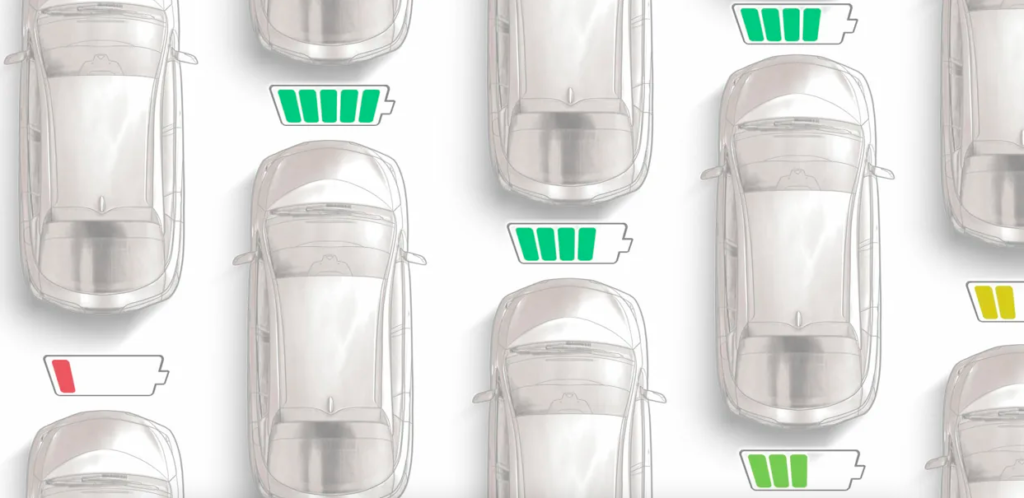
As more manufacturers follow Tesla’s lead and replace internal combustion engines with lithium-ion batteries, now is an excellent moment to learn more about electric automobiles.
The United Kingdom has announced a proposal to prohibit the sale of new automobiles fueled entirely by gasoline or diesel by 2035. California intends to phase out gasoline-powered vehicles over the next 15 years. On addition, the Biden administration has pledged to invest $7.5 billion in charging infrastructure.
What exactly is an EV?
Forget everything you thought you knew about internal combustion engine (ICE) vehicles. They blend a fuel, like as gasoline, with air. The compressed mixture is then ignited by a spark, resulting in a (small) explosion. The heat and expanding gas press down on the engine’s pistons, causing the automobile wheels to turn. And so forth.
An electric vehicle, or EV, is made up of two basic parts: an electric motor (or two for all-wheel drive) and a battery pack to power it. A real EV lacks an internal combustion engine, as well as a gasoline pump, gas tank, and oil pan. There is no need for oil or smog inspections!
While Tesla leads the EV debate, there are many kinds of zero-emission cars, or ZEVs, as well as other fuel-efficient (but not fully gasoline-free) vehicles.
There’s the traditional EV, also known as a “battery electric vehicle” (or BEV), which you’ll recognize if you see a Tesla Model 3, Nissan Leaf, or Jaguar I-Pace driving past. In California alone, there are over 70 different kinds of EVs for sale. These are entirely reliant on energy, which they get by connecting into a power source.
To charge, a plug-in hybrid electric car, or PHEV, must still be, well, plugged in. However, when the battery dies, the automobile operates on gasoline.
The Toyota Prius, which most people refer to as a hybrid, introduced most of us to electric vehicles. However, since it does not need to be plugged in and still requires fuel, it is classified as a hybrid-electric vehicle. A Prius does not have a charging port, just a petrol tank. The energy from driving and braking is used to charge the battery.
While Teslas are common, fuel cell electric cars, or FCEVs, are uncommon. Only a few automobile manufacturers employ hydrogen, which is combined with oxygen in fuel cells to generate power.
The Toyota Mirai and Honda Clarity are the most popular hydrogen vehicles in the United States. However, locating a hydrogen fuel station might be difficult.
The fundamentals of batteries
The lithium-ion battery in your Audi E-tron, Chevy Bolt, or Tesla Model Y operates the same way.
According to William Crockett, vice president of bonding wire sales at Japanese semiconductor firm Tanaka, batteries often comprise lithium, cobalt, nickel, and aluminum.
They are used to store energy and are often referred to as li-ion batteries. On either end, there are two terminals: anode and cathode. In the middle lies a liquid known as the electrolyte. When a circuit is linked, the lithium contained in the anode and cathode flows as ions, either charging or depleting the battery’s energy. Varied batteries have different voltage levels, which determine how much current they can accept. The Tesla Model 3 battery is powered by 300 volts.
Crockett refers to lithium-ion batteries as the “mainstream” batteries used in most EVs. However, lithium is not the only metal utilized. He said that there are several cathode materials. The mineral manganese is used by the Nissan Leaf, whereas cobalt, aluminum, and nickel are used by Tesla. It is striving to eliminate cobalt because, as Crockett put it, “cobalt is awful material,” and not simply for environmental reasons. In the Democratic Republic of the Congo, it is often mined utilizing child labor. Tesla said it will continue to use “conflict-free” cobalt until a better alternative is found.
A Tesla Model S battery pack has 516 cells in each of its 16 modules, for a total of 8,256 cells weighing over 1,200 pounds, or almost a fourth of the entire weight of the vehicle. All of those cells carry 100 kWh of energy, which corresponds to around 300 miles of driving range.
When braking or descending, you may recharge the battery via regeneration, which is the process by which energy from the friction of braking or accelerating is returned to the battery. Over the course of an uphill trip, you may move from 78 percent battery to 79 percent.
Your automobile battery, like a telephone, has a limited number of charging cycles before it has to be recharged more often. The range also decreases with time.
The more you use your electric vehicle, the faster the battery will deplete. Someone who commutes every day will need to repair their batteries sooner than someone who just drives sometimes.
Even if you are a heavy user, it will be a long time and a long distance before you need to replace your battery. In comparison, Tesla’s regular Model 3 battery guarantee is eight years or 100,000 miles. If you do need to replace it, which is normally after 10 years, the battery alone will cost about $10,000 – not adding servicing and labor fees.
Charging facilities at gas stations are ineffective for fully electric automobiles. You’ll have to locate a public charging station or plug up at home instead.
Most individuals, according to Hannon Rasool, deputy director of the California Energy Commission’s fuels and transportation section, do not need to charge their car every day.
EVs can now go 200 to 500 miles before having to be recharged.
“The fact is that most of us don’t travel more than 25 miles in a day,” Rasool stated recently over the phone. Nonetheless, some drivers have “range anxiety,” or the dread of running out of charge while they are far from a charging station.
According to Jeffrey Lu, an air pollution scientist who also works for the California Energy Commission, around 75% of charging occurs at home.
For ordinary appliances, there is Level 1 charging with a 120-volt socket that you may find throughout the home. An EV may take anywhere from eight to more than 16 hours to charge with this low-level charger.
Level 2 is 240 volts and is used by your dryer outlet. With this quicker charging level, you may expect to gain up to 20 to 30 miles of range each hour of charging. It might take up to eight hours to charge completely. Level 2 charging may be installed in your house.
Then, “when you’re out and about,” there are public charges, according to Lu.
Level 2 charging is used by the majority of chargers in public charging networks in the United States, including EVgo, Electrify America, ChargePoint, Blink, and others. PlugShare is a great resource for finding charging outlets everywhere you go. Google Maps also provides pricing information. The majority of public charging is provided in parking areas in front of supermarkets and retail malls, as well as parts of parking garages. Some cities have designated public parking spaces for EV charging.
AC power, which stands for alternating current, is used by both Level 1 and Level 2 chargers. Plugging in at home is less expensive than utilizing a charging network, which might charge depending on the amount of time plugged in or the number of kilowatt hours, or kWh, utilized. This is the quantity of energy supplied to your car. Typically, the fee is about $0.13 per kWh. Filling up an EV with a 75-kWh battery costs about $10. For quicker charging, the charge is closer to $0.40 per kWh, which totals $30.
For a typical sedan — say, a new Honda Accord — to fill up with today’s gas prices (the national average is $3.18 per gallon), that would cost over $47.
“When people think about charging up rapidly, they think of DC (direct current) fast charging,” Lu said.
It normally takes around 40 minutes to charge most automobiles to 80 percent, often called as Level 3 charging.
However, not all EVs can handle that kind of power. Tesla’s network includes ultra-fast “superchargers,” which are more expensive than Level 2 charging.
Once at a charging station, you need to be able to plug in. Different cars have different types of connectors, from the common J1772 to the fast-charging CHAdeMO.
EV deals and discounts
Now that you understand how EVs operate, you should conduct some research before purchasing one. Federal tax credits of up to $7,500 are available for plug-in hybrids, FCEVs (aka hydrogen cars), and EVs, but not for Tesla or General Motors vehicles. Because those firms have already sold 200,000 low-emission vehicles, new sales are no longer eligible for the tax discount. Nissan is expected to be the next to do so. Biden has suggested raising the manufacturer limit to 600,000 vehicles, which would allow more purchasers to qualify for Chevy Bolts and the future electric Cadillacs. Tesla would continue to surpass the limit.
Most states have their own set of tax breaks and refunds. The same holds true for your city, county, or municipal utility district. The regional air quality control agency in the San Francisco Bay Area offers a $5,000 trade-in program to replace an old automobile with a zero-emission vehicle. So it’s worthwhile to look around and even phone your power company to inquire about any EV initiatives.
Another money-saving option is free public parking. New electric vehicles, such as the Volkswagen ID. Four years of free charging at Electrify America stations are included. The Audi E-tron GT and the future Lucid Air are in the same boat. EA will provide two free years to Mercedes EQS owners. Other vehicles with charging offers include the Ford Mustang Mach-E, Nissan Leaf, and Hyundai Ioniq 5.

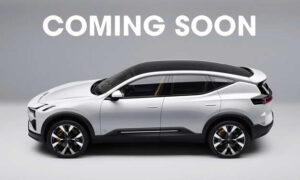
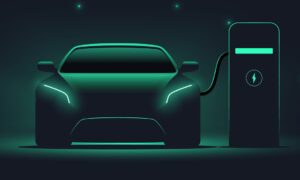
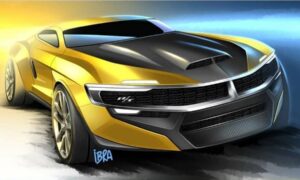
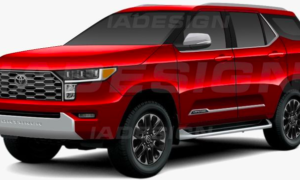
Pingback: What is the best deal on a new car in August 2022? - Top Future Cars